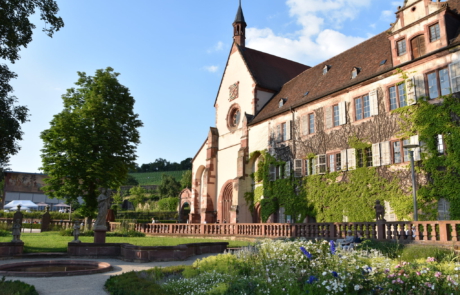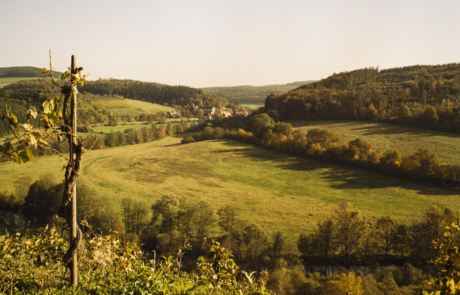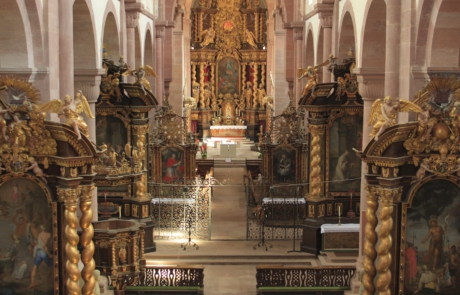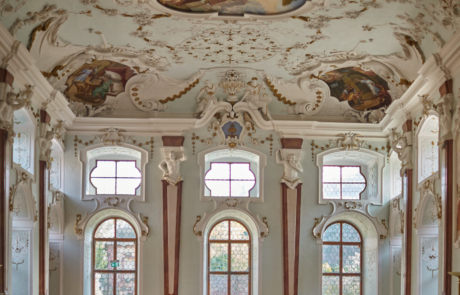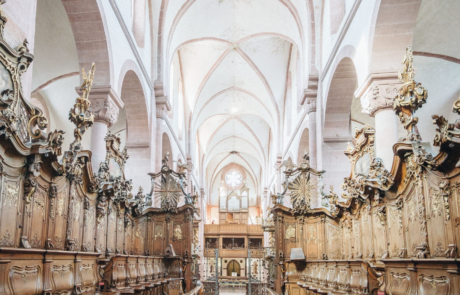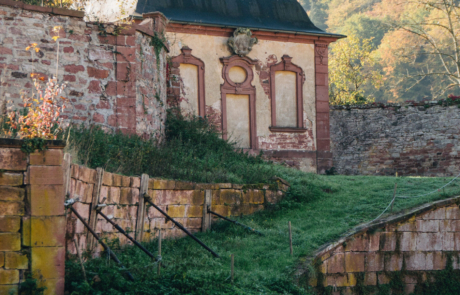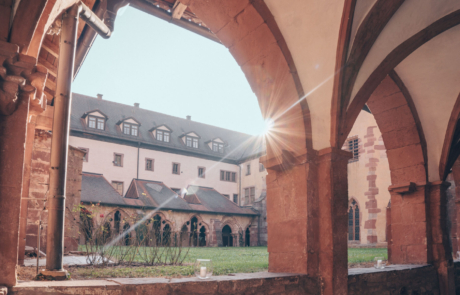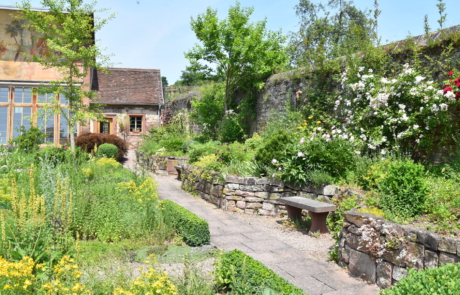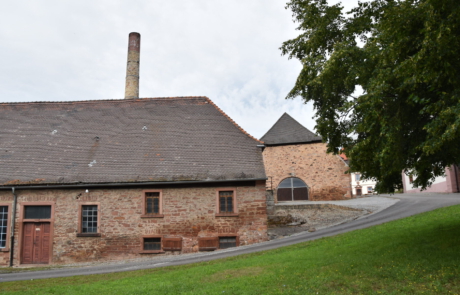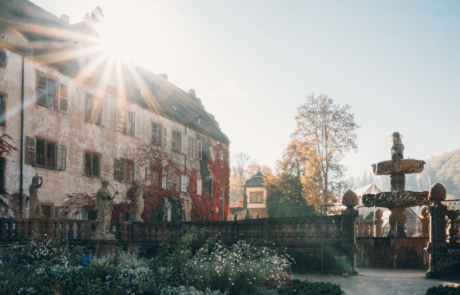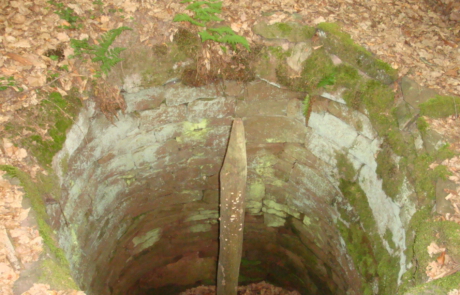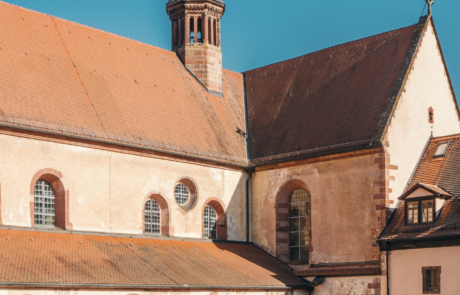BRONNBACH
Founding date: 1151 (Ordnungsnummer 326 n. Janauschek)
Dissolution date: 1802
Filiation / mother monastery: Morimond-Bellevaux / Maulbronn Monastery
Daughter monastery: /
The Bronnbach cistercy was relocated to the water-rich valley floor of the Tauber in 1157. The abbot and founding convent came temporarily from Waldsassen instead of from the mother monastery in Maulbronn. The Bronnbach Cistercians primarily promoted viticulture in the region. Despite the manageable size of the area, typical elements of the cultural landscape are largely represented. The monastery’s town courtyards were located in Wertheim, Würzburg, Frankfurt, Aschaffenburg and Miltenberg.
Audio version
Current events
Latest posts
The cultural landscape
Bronnbach Abbey, a Cistercian abbey founded in 1153, is located in the Tauber Valley near Wertheim. The founding legend refers to a lark that flew up in search of a suitable location and pointed to the site. The mother monastery was initially Maulbronn and later Ebrach Monastery.
In 1803, the Princely House of Löwenstein-Wertheim-Rosenberg took over the entire complex, including large parts of the agricultural land, as part of the monastery landscape. The monastery grounds have been the property of the Main-Tauber district since 1986. The district organizes the guided tours of the monastery.
Bronnbach is one of the oldest and best-preserved monasteries of the Cistercian order in southern Germany. The Bronnbach monastery landscape is exceptionally well preserved. The structures of paths and forest boundaries, the visibility of the former farmyards, vineyards and ditches show the creative power of the Cistercians in the cultivation of the Bronnbach monastery landscape. Individual granges have been preserved. The Schafhof is used as a farm. The arable land characterizes the monastery landscape with an almost unchanged route, as it can be traced back to the use by the Cistercians. Other granges, evidence of popular piety or economic uses such as the remains of an oil mill are relics of the monastic landscape. Two carp ponds are still preserved. The vineyards still characterize the surrounding area today.

